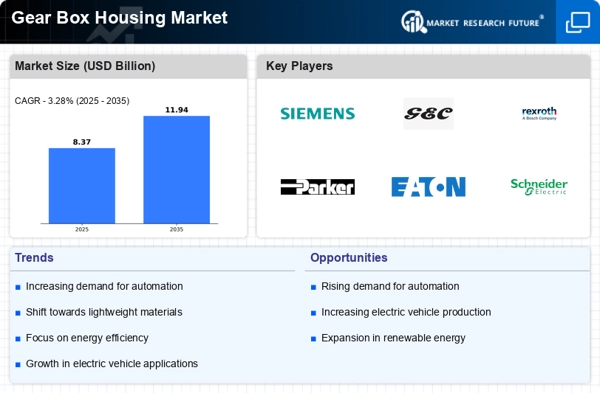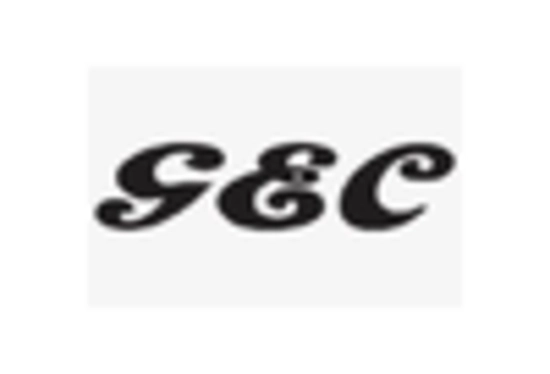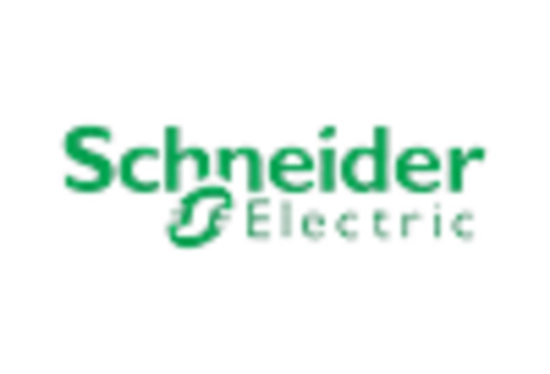Rising Demand for Automation
The Gear Box Housing Market is experiencing a notable increase in demand for automation across various sectors, including manufacturing and automotive. As industries strive for enhanced efficiency and productivity, the integration of automated systems necessitates robust gear box housing solutions. According to recent data, the automation market is projected to grow at a compound annual growth rate of approximately 9% over the next five years. This growth is likely to drive the demand for gear box housings, which are essential components in automated machinery. Furthermore, the need for precision and reliability in automated systems underscores the importance of high-quality gear box housing, thereby propelling the market forward.
Expansion of Renewable Energy Sector
The Gear Box Housing Market is poised to benefit from the expansion of the renewable energy sector, particularly in wind and solar energy applications. As the world shifts towards sustainable energy sources, the demand for gear box housings in wind turbines is expected to rise significantly. Wind energy installations have seen a steady increase, with a reported growth of over 10% in new installations in recent years. This trend suggests a corresponding rise in the need for durable and efficient gear box housings that can withstand harsh environmental conditions. The renewable energy sector's growth not only enhances the market for gear box housings but also aligns with global sustainability goals.
Growing Demand in Industrial Applications
The Gear Box Housing Market is witnessing a surge in demand driven by various industrial applications, including construction, mining, and agriculture. These sectors require reliable gear box housings to ensure the smooth operation of heavy machinery and equipment. Recent data suggests that the industrial machinery market is projected to grow at a rate of approximately 5% annually, which is likely to bolster the demand for gear box housings. As industries continue to expand and modernize their equipment, the need for durable and efficient gear box housing solutions becomes increasingly critical, thereby supporting the overall growth of the gear box housing market.
Increased Investment in Electric Vehicles
The Gear Box Housing Market is likely to experience substantial growth due to increased investment in electric vehicles (EVs). As automotive manufacturers pivot towards electric mobility, the demand for specialized gear box housings tailored for EV applications is on the rise. Recent statistics indicate that the electric vehicle market is expected to grow at a staggering rate, with projections suggesting a compound annual growth rate of over 20% in the coming years. This shift necessitates innovative gear box housing solutions that cater to the unique requirements of electric drivetrains, thereby creating new opportunities within the gear box housing market.
Technological Innovations in Manufacturing
The Gear Box Housing Market is significantly influenced by technological innovations in manufacturing processes. Advancements such as additive manufacturing and precision machining are revolutionizing the production of gear box housings, allowing for greater customization and efficiency. These innovations not only reduce production costs but also enhance the performance and durability of gear box housings. As manufacturers adopt these cutting-edge technologies, the market is likely to see an increase in the availability of high-quality gear box housings that meet diverse industry needs. This trend indicates a promising future for the gear box housing market as it adapts to evolving manufacturing capabilities.

















Leave a Comment